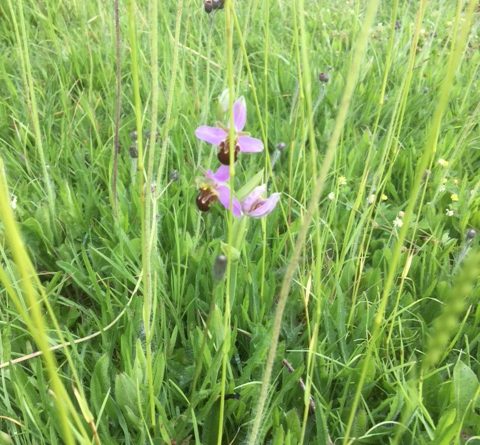The Apiary in June
Photo: A Beautiful Bee Orchid in a member’s field
Well, maybe I was a little optimistic that the weather in June would improve and any “June Gap” would be short or non-existent. The truth of it has been that it turned cold and many Queens cut back on their egg laying as the nectar flow dried up or it continued to be cold and wet so foragers could not leave the hive.
The Queens from the swarming hives have not mated well and I’m finding many ‘Drone Layers’ or failing hives that have clearly lost their Queens. This is another good reason to have your own small Queen breeding programme so you have a couple of mated Queens on standby in Nucs just in case the main hive Queen fails.
The other increasing problem is that we have an extensive outbreak of European Foul Brood (EFB) in our area resulting in the National Bee Inspectors examining Apiaries and unfortunately the destruction of some colonies.
If you have any concerns about the state or shape of the grubs in the Brood chamber take a couple of pictures and contact our local Bee Inspector.
If you look at Bee Base, www.nationalbeeunit.com where we always recommend you register your Apiary, there are full details of what to look for in your combs and the symptoms of EFB.
Once again a warning that many weaker hives, including many of my own Nucs, are getting very hungry, stopping the Queens from laying just at a time when you need the opposite as they build their numbers ready for the next nectar flow.
A weak feed of sugar syrup will help to solve this problem and encourage the Queen to resume laying.
If it starts to warm up by the end of the month and the rain stays away, the Lime and BlackBerry are all ready to burst into flower producing a good flow if you have enough bees in your hives ready to collect it.



Ensure you have plenty of supers on, they will need the room, or they’ll just fill up the Brood chamber again restricting where the Queen can lay.





Next Month: We need to consider taking off the main Honey crop and getting ready to treat for Varroa.
Keep a keen eye on the Varroa drop on your floor slides and this will help you decide if treatment is needed – More advice in future editions.


